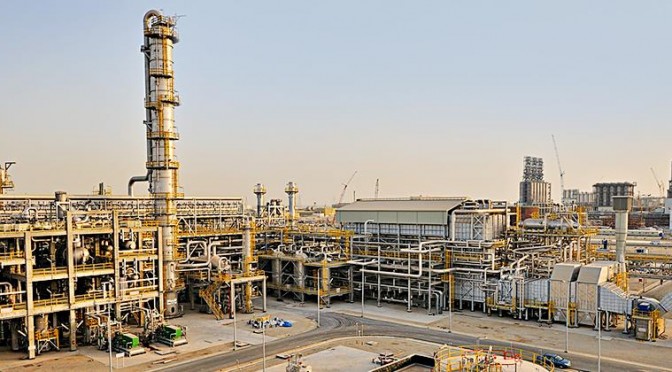Business/TechnologyIndia
PM Modi added one more significant record in the last month.
* Modi Inaugurates HURL- Sindri Fertilizer Plant in Jharkhand

By Atanu Das
New Delhi, 30 April – PM Narendra Das Modi switched on the Hindustan Urvarak & Rasayan Ltd (HURL) and dying Sindri Fertilizer Plant once again at Sindri, Dhanbad, Jharkhand
Sindri Fertilizer Plant.
Revival of fertilizer plants: The plants of Ramagundam, Gorakhpur and Barauni along with Sindri have been revived and operational with plans for the Talcher Fertilizer plant to be operational next year.
Together they will produce 60 lakh metric tonnes of urea Hindustan Urvarak & Rasayan Limited (HURL): It is a Joint Venture Company of National Thermal Power Corporation Ltd (NTPC), Indian Oil Corporation Ltd (IOCL), Coal India Ltd (CIL) and FCIL.The company was incorporated in 2016 and revived the Sindri Fertilizer Unit by setting up a New Ammonia Plant with an installed capacity of 12.7 LMT per annum.
Together they will produce 60 lakh metric tonnes of urea Hindustan Urvarak & Rasayan Limited (HURL): It is a Joint Venture Company of National Thermal Power Corporation Ltd (NTPC), Indian Oil Corporation Ltd (IOCL), Coal India Ltd (CIL) and FCIL.The company was incorporated in 2016 and revived the Sindri Fertilizer Unit by setting up a New Ammonia Plant with an installed capacity of 12.7 LMT per annum.

Significance of the HURL- Sindri Fertilizer Plant
Atma Nirbhar in the urea sector: The government is aiming to revive the closed urea units of Fertilizer Corporation of India Ltd. (FCIL) and Hindustan Fertilizers Corporation Ltd (HFCL) to augment the availability of domestically produced urea.
Streamlined supply of urea: The plant will ensure an adequate supply of urea to the farmers in the state of Jharkhand as well as West Bengal, Odisha, Chhatisgarh, Madhya Pradesh and Bihar.
Economic development: The plant will boost the overall economic development in the region including the development of infrastructure like roads, railways, ancillary industry etc
Employment: The plant would provide 450 direct and 1000 indirect employment opportunities in the region and the MSME sector will be developed with vendors for the supply of various goods for the factory.
Self Sufficiency: It will provide an impetus to the local farmers by timely supply of fertilizers and extension services and also help in reducing imports.
Fertilizer Sector in India
Constituents: India’s fertiliser industry is dominated by the production of urea, followed by DAP (diammonium phosphate), MOP (muriate of potash), and complex fertilisers.
Production: India has achieved 310 lakh metric tonnes of Urea production in 2024 from just 225 lakh metric tonnes of urea in 2014 with an annual growth rate of approximately 10%
Consumption: India is one of the largest consumers of fertilizer with annual demand of Urea being 360 lakh metric tonnes
PSUs in the Fertiliser sector: A total of 9 units are administered by the Department of Fertilizers
Example: FCI Aravali Gypsum & Minerals India Limited (FAGMIL); The Fertilizer Corporation of India Limited (FCIL); Hindustan Fertilizer Corporation Limited (HFCL); Rashtriya Chemicals and Fertilizers Limited (RCF)
What Are the Challenges in the Indian Fertilizer Sector?
Import Dependency: India imports both crude and manufactured fertilizers as well as raw materials such as rock phosphate, ammonia, and phosphoric acid.
In FY2022-2023, India imported fertilizers worth over 1.38 trillion Indian rupees.
Imbalanced Nutrient Application: The indiscriminate usage of urea over other nutrients affects the nutrient profile of the crop raising concerns about soil health and agricultural sustainability.
Subsidy Burdens: Fertiliser subsidies in addition to adding up the financial stress for the government also lead to leakages through smuggling for other industrial uses
High cost of handling and management: The storage of liquid fertilizers requires high capital investment in the smart storage system as they are soluble in water.
Imbalanced Nutrient Application: The indiscriminate usage of urea over other nutrients affects the nutrient profile of the crop raising concerns about soil health and agricultural sustainability.
Subsidy Burdens: Fertiliser subsidies in addition to adding up the financial stress for the government also lead to leakages through smuggling for other industrial uses
High cost of handling and management: The storage of liquid fertilizers requires high capital investment in the smart storage system as they are soluble in water.
Photos: PIB/Internet Inputs






